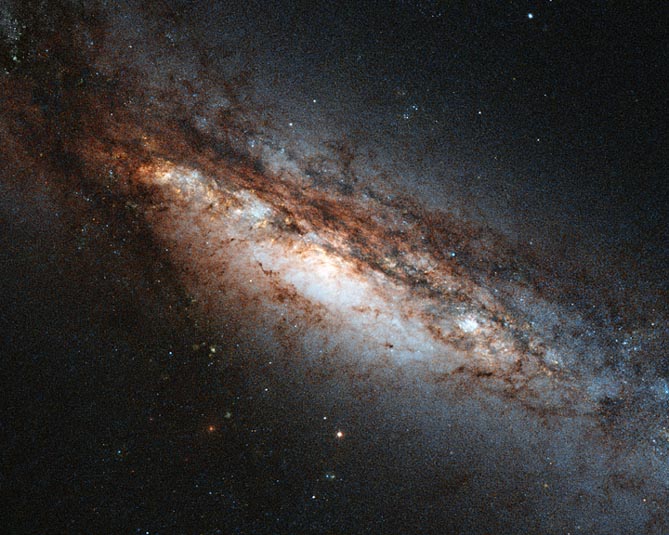
NGC 660
Ring Galaxy
RA 01hr 43m 02.35s Dec +13° 38' 44.45"
Pisces
45 million light years
11.2
8.4' x 2.7'
ESA/Hubble & NASA
December 2, 2013
ABOUT THIS IMAGE:
This new Hubble image shows a peculiar galaxy known as NGC 660, located around 45 million light-years away from us.
NGC 660 is classified as a "polar ring galaxy", meaning that it has a belt of gas and stars around its center that it ripped from a nearby neighbor during a clash about one billion years ago. The first polar ring galaxy was observed in 1978 and only around a dozen more have been discovered since then, making them something of a cosmic rarity.
Unfortunately,
NGC 660’s polar ring cannot be seen in this image, but has plenty
of other features that make it of interest to astronomers – its central
bulge is strangely off-kilter and, perhaps more intriguingly, it is thought
to harbor exceptionally large amounts of dark matter. In addition, in
late 2012 astronomers observed a massive outburst emanating from NGC 660
that was around ten times as bright as a supernova explosion. This burst
was thought to be caused by a massive jet shooting out of the supermassive
black hole at the center of the galaxy.